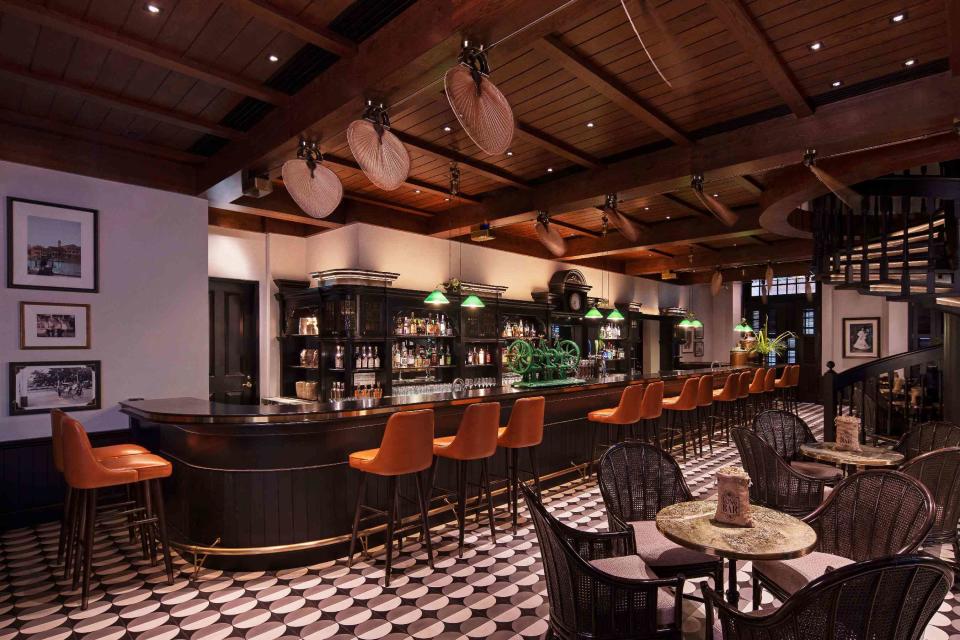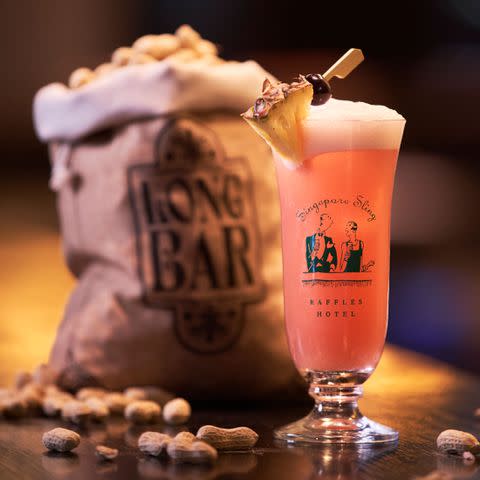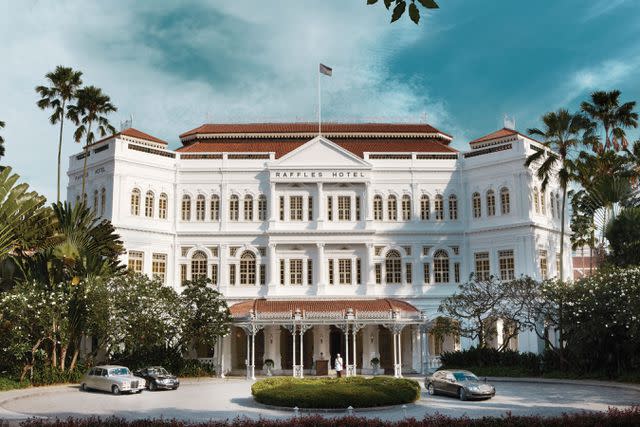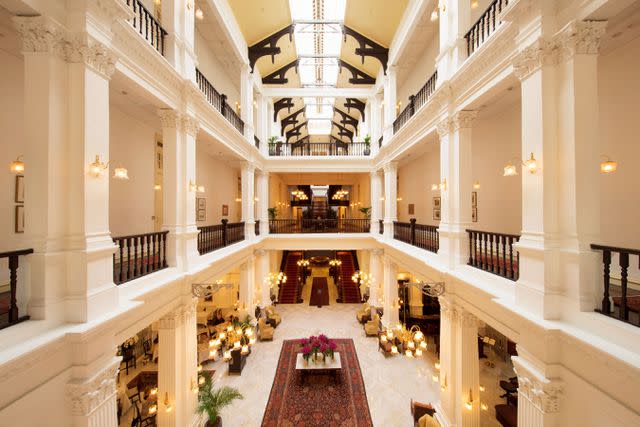What It’s Like to Drink a Singapore Sling at Its Birthplace
You can still order the original Singapore Sling at Raffles Long Bar in Singapore.

Courtesy of Raffles Hotel Singapore
I loved all cocktails equally, except for the Singapore Sling. A good friend of mine would always make them with too much Heering cherry liqueur, lending the drink a cough medicine effect.
But because I was headed to Singapore to try the cocktail where it was invented, I wanted to give it another shot. So I drove to Nickel City in East Austin, Texas, a dive bar specializing in Tiki drinks, and ordered one. Despite it no longer being on the menu, the bartender said he could whip one up for me. They were only missing Benedictine, and if I didn’t mind, he didn’t either.
I didn’t mind: The cocktail was rich, sweet, filling, and still very alcoholic. Besides, missing an ingredient is kind of part of its lore. The Singapore Sling has a storied history of devolving and evolving; originally just gin, citrus, soda, and cherry brandy, the cocktail eventually became something much sweeter, thanks to canned juices, before finally settling somewhere near its original version with fresh citrus.
Related:Singapore Sling
After a 14-hour flight to Singapore, I ambled over to the bar where the Singapore Sling was invented, Raffles Long Bar.

Courtesy of Raffles Hotel Singapore
After walking through the glistening white archways of Raffles Hotel, strolling through the courtyard, and waiting in a queue of like-minded patrons who may or may not have journeyed to Singapore specifically for this very experience, I marveled at the bar’s surprisingly modern interior. The best way to describe it is as a romanticized 1920s Malaysian plantation, complete with a staircase crawling its way towards the ceiling, adorned with intricately woven rattan furniture.
On the ceiling, rows of 19th century fans oscillate in unison, giving the illusion that you are underneath a boat, and that these are oars, rowing their way up a stream, against a strong current below.
But all of this is not to be outdone by the loud crunch coming from the floor. In stark contrast to the spotless streets of Singapore, the tiled floor in this room is covered, coated, littered with emptied out peanut shells. It is the only place in Singapore that allows littering, although you can only discard your peanut shells here (I asked).

Courtesy of Raffles Hotel Singapore
When my Singapore Sling arrived, I didn’t even notice it. With everything going on – the peanuts, the fans, the austere white archways – it’s almost easy for this bright pink drink topped with a pineapple slice to fade into the background. And perhaps that’s the point: A drink that requires internet sleuthing to track down in the US is more or less an afterthought in Singapore. Shouldn’t it be? After all, it was designed to be a discrete way for women in Singapore to get around silly etiquette rules, which discouraged drinking in public.
Related:Singapore's Hawkers Raise Prices for First Time in 40 Years
The drink was refreshing, so much so that it vanished all too quickly. The most notable feature though, was how light it was. Although the ones I’ve had in the past were filling, this one was a nice blend of flavors that was light, quenching, and a perfect respite from the humidity just outside. Paired with peanuts, I can’t think of a better summertime beverage.

Courtesy of Raffles Hotel Singapore
I returned from Singapore with only a few souvenirs, as it’s difficult to bring anything tangible home. But I’m still finding one thing weeks later, hidden in the folds of my clothes, and at the bottom of my bag: Peanut shells.
For more Food & Wine news, make sure to sign up for our newsletter!
Read the original article on Food & Wine.

